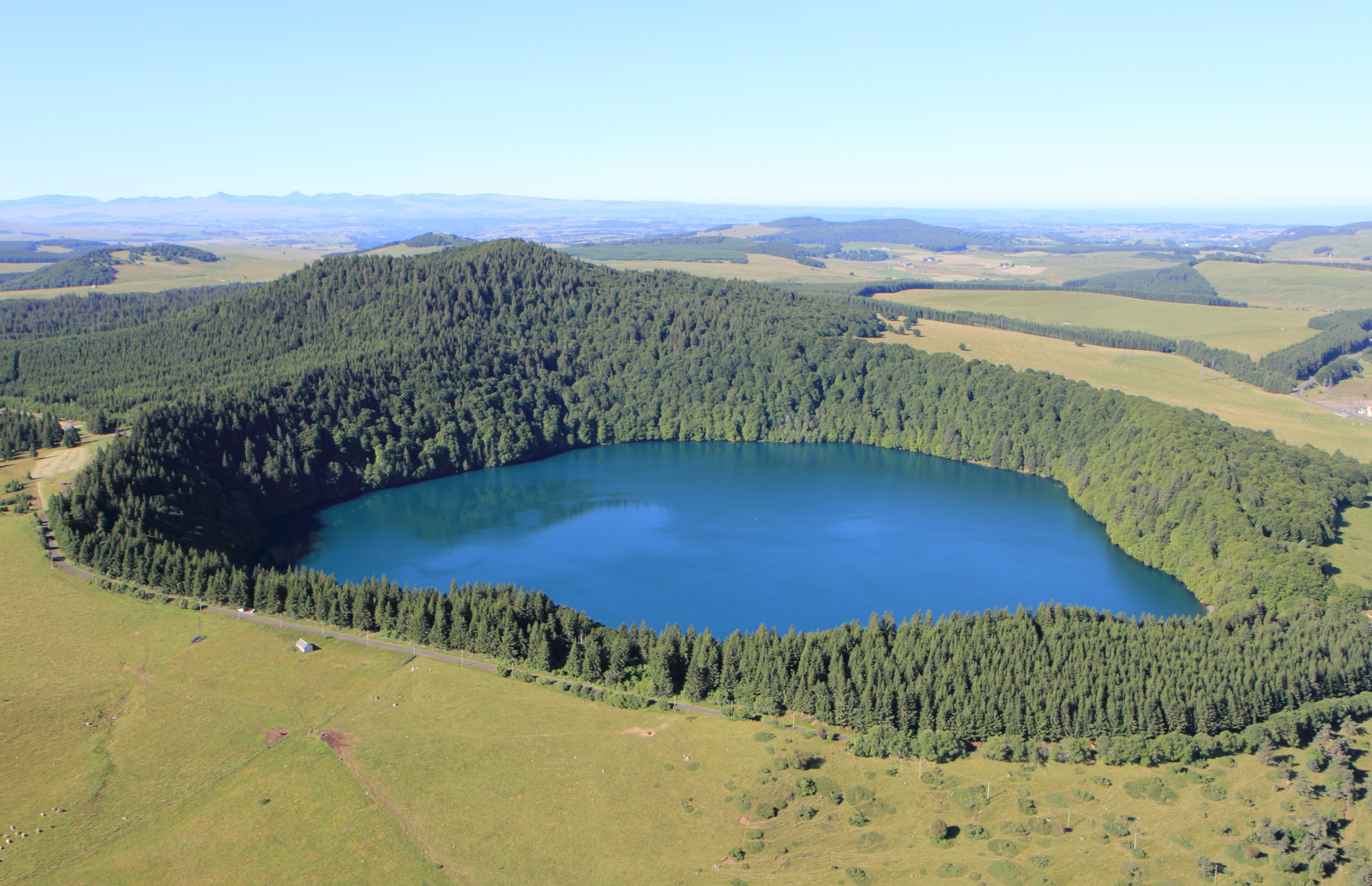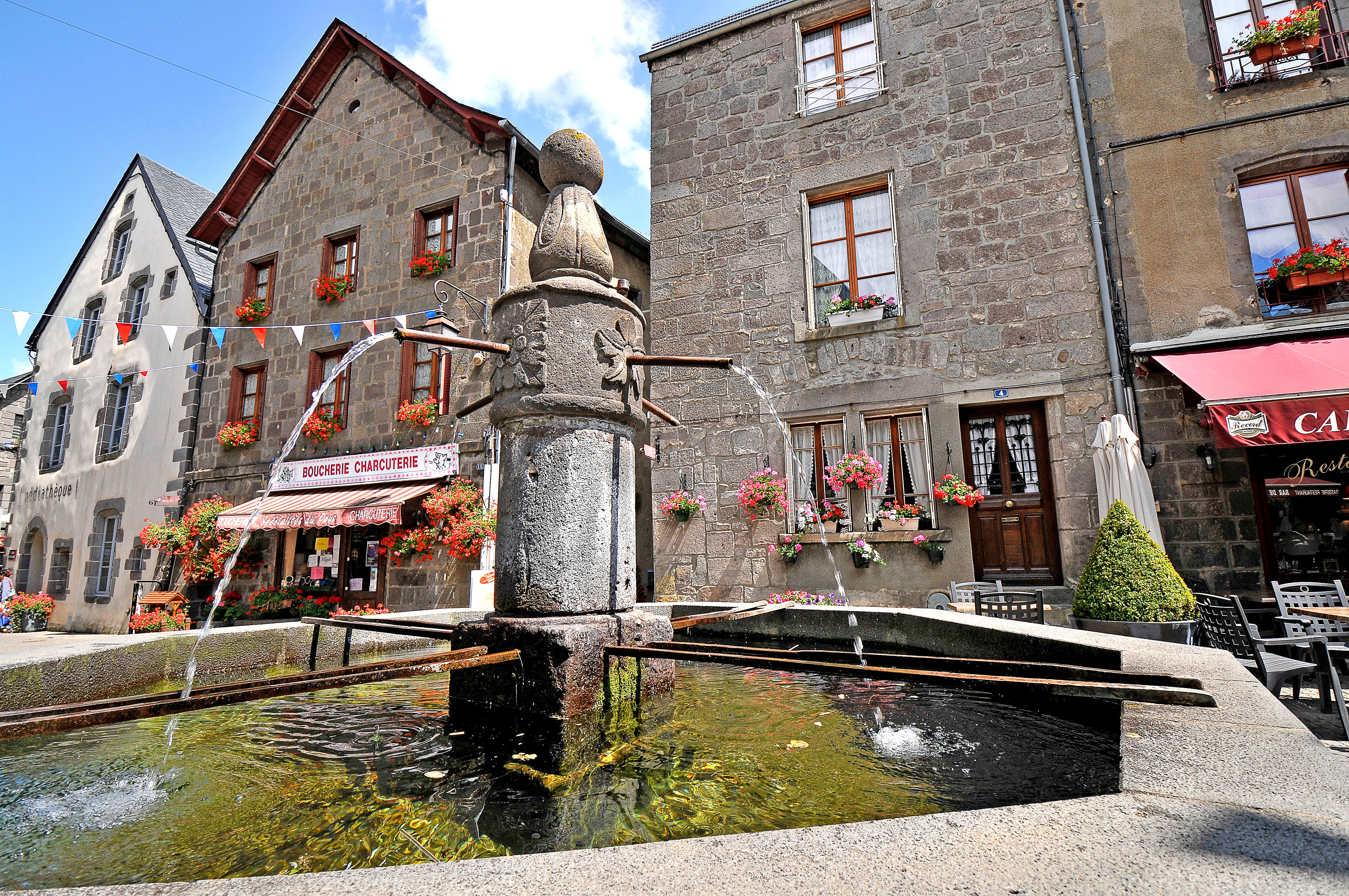Glow up: Inside France’s under-the-radar volcanos on the ultimate field trip for lava lovers
Auvergne has never had much of a look-in with overseas visitors but the region’s tantalising topography deserves to be seen, discovers Lucy Shrimpton

I’m waiting on a platform for an e-train destined for the summit of a volcano. The station’s got all the vibes of the Metro, my observation validated when a fellow passenger jests “Next stop Chatelet!”, alluding to Paris’s Oxford-Circus. The French kids around me, one can’t help but notice, are jumpier than your average school trippers, high on interpreting “dormant” and “active” as “Pssst! The mountain’s gonna explode any minute. Pass it on!” I smile (how cute!) yet my faux nonchalance is given away by a gently tapping foot; I suppose they could be right... right?
I’m on the outskirts of Clermont-Ferrand in the Auvergne-Rhone-Alpes region of France, somewhere in the Massif-Central highlands, which you’ll have heard of if you were paying attention to your Tricolore textbook. It’s not doing the region a disservice to say it’s often overlooked by visitors favouring Paris, the Med, Alps and Atlantic coast (north, south, east and west respectively – each a three-to-four-hour drive away). Which might go some way to explaining why so few people associate France with volcanoes.

Chain reaction
Fifteen minutes later and the train’s arrived on the peak of the Puy-de-Dome volcano. At 1,465m above sea level, it’s the highest volcano in the area, the purpose of an ascent principally to survey the Chaine-des-Puys, the collective name for 80 volcanoes in an area just 45km-long by 5km-wide. One panoramic sweep of the vista and I realise that they’re not at all the 80 uniform entities I was perhaps expecting – as if they’d once appeared like nature’s Whack-a-Mole. Rather, they’re all shapes and sizes, undulating into one another in velvety-green birch forest drapery.
It’s hard to imagine the brutality of what it would have looked like live, as the landscape was forming, a son et lumière of vapour-choking, rock-popping lava flowing
Some, I’m told, are entirely inside others – Russian dolls, if you will – and what’s also noteworthy, I glean from the guide, is not just their youthfulness (the last eruption here was only around 7,000 years ago) but the fact that every type of volcano existing in the world is represented here (good news for one-stop bucket-listers). It’s so truly peaceful, it’s hard to imagine the brutality of what it would have looked like live, as the landscape was forming, a son et lumière of vapour-choking, rock-popping lava flowing.
Core knowledge
If my ability to conjure the reality of an erupting volcano is lacking on Puy-de-Dome, impressive and engaging simulations at Vulcania take care of my shortcomings. It’s an amusement park that almost entirely dispenses with Mickey-ears and thrilling rides in favour of solidly educational yet exciting virtual reality experiences – probably designed for parents who like to smuggle learning into family holidays to see their kids’ neural pathways light up like... well... lava flow. The animations include an eagle’s flight, a submarine experience so realistic I have to be reminded that I haven’t actually been plunged 2.5km down, and one showing me (and the oldies around me whooping at the special effects) what future eruptions could look like – though volcanoes in the Chaine-des-Puys won’t erupt again, the area is still technically active as there’s molten magma beneath the ground. By the time I depart, my knowledge may still be topsoil to a geologist’s bedrock, but at least I can identify the difference between a cone volcano (see the volcano emoji) and the dome variety.

Lake quake
But there’s a third volcano variety, I’m told, and to complete the trio I travel to the south – to the Massif du Sancy – to see it. Lac Pavin near Besse is neither dome nor cone but a “maar” volcano – in effect a lake and, at 6,700 years old, it’s France’s youngest volcano, today twinkling the kind of turquoise you’d expect from the Med. But you can’t swim here. France’s answer to Loch Ness is awash with a series of the most mysterious legends that may ever (or never) have happened, but much of the menace is real: effectively a lake upon a lake – one layer oxygenated, one not – if the lower lake were ever to be rumbled enough to surface, gas would flood the valley, rendering everyone nearby toast. Reassuring then to hear that it’s all being carefully monitored, but no surprise that the lake’s name comes from the Latin word for “scary”.
Inside a volcano
Back up to the north and two more simulations to rival Vulcania’s are shown at the nearby Lemptégy volcano. For real geologists though, the films are eclipsed by the drama of the actual volcano you can visit on the other side of the cinema door, hollowed out due to its former function as a quarry excavating stone to rebuild World-War-II-ravaged cities.
More verbs need to be invented for the way lava flows... it’s actually a graceful thing, like a fountain
“The layers you can actually see here are fantastic for demonstrating a volcano’s chronology,” local academic Benjamin van Wyk de Vries tells me. “And it’s a truly multimedia experience,” he adds, pointing to colourful tranches of rock as visually distinguishable as cake layers, and touching humungous volcanic “bombs” that sit crater-side like menacing mementoes.
Instrumental in securing Unesco status for the Chaine-des-Puys back in 2018 (which recognises the world-heritage value not just of the volcanoes but of their coexistence with the 30-million-year-old Limagne fault), something about Benjamin’s wide-eyed wonder is reminiscent of those kids back on the platform: “More verbs need to be invented for the way lava flows: ‘Oozing’, ‘spewing’, ‘spurting’ are all too medical, right? It’s actually a graceful thing, like a fountain,” he says, recalling the many worldwide locations where he’s witnessed real-time eruptions. Experts, I guess, were all school trippers once.
Other places to explore
Clermont-Ferrand
In the shadow of Puy-de-Dome, a vast student population, bookshops, art galleries and cafe culture give France’s 22nd city its youthful sheen. A highlight is the Gothic cathedral, anthracite-toned in volcanic stone yet lifted inside by candlelight, mesmerising stained glass, a forest of vertical lines and virgin blue. The chief attraction of the metropolis is Aventure-Michelin, a multi-media museum chronicling how the tyre manufacturing pioneers were also the shrewdest marketers of their day: designing poster boy Bibendum (aka the Michelin Man); producing tyres that left an “M” brand imprint wherever they rolled; and creating travel guides and maps to make consumers desire enough travel to necessitate frequent tyre replacement.
Grotte de la Pierre in Volvic
Volvic, a village built on lava flow, may be synonymous with bottled water but it has a heritage hinging more on the excavation of volcanic stone. This mining gallery visit features a multi-station film telling a story with so many Jean-de-Florette vibes they really should pipe the Stella Artois music.

Besse
If you want a short-cutting device to show you where all of France’s most characterful towns and villages are, search up the label “Petites-Cites-de-Caractere”. Beautiful Besse is one such, thanks to its 15th century houses, cobbles and old town walls. Carefully protected by preservation stipulations, street furniture such as shutters and doors have to be painted in a palette of pigeon-grey and sang-de-boeuf (bullock’s-blood red, ew); the result is a time-travelling French-film-set feel.
The petrifying springs in Saint Nectaire
Trot along to these curious stone-art workshops where seventh-generation craftsman Eric Papon makes ornamental pieces created when mineral-rich volcanic water flows from natural sources below ground up to a cave reservoir, before cascading down ladders dousing his handmade moulds. What turns to stone elsewhere in 100 years does so here in one, so don’t stand under a drip too long.
More volcanoes at Puy-des-Gouttes
Head to a lesser-known volcano by booking a sunset walk to the summit of the Puy-des-Gouttes with local nature guide Kevin Conilh. If you’re cool with communicating in a blend of French and English, the rewards are his birdsong mimicry, far-reaching views, plus the wine and charcuterie in his backpack.
You can also explore the volcanoes by hiking France’s GR441 route, donkey trekking, paragliding, hot air ballooning or on a temporary art trail.

Travel essentials
Getting there
Travel by car from Folkestone to Calais with Eurotunnel. Clermont-Ferrand is a drive of 440 miles. Alternatively, travel from London to Clermont-Ferrand by train (with a station change in Paris from Gare-du-Nord to Bercy).
Staying there
Hotel Litteraire Alexandre Vialatte in Clermont-Ferrand will be appreciated by bibliophiles. There’s a bedtime book in your room and a library downstairs, though vibes are more business than boho. hotelslitteraires.fr
Volvic-Organic-Resort in Volvic; the T-shaped, grass-roofed lodges make a great base for exploring volcanoes, plus e-scootering, canoeing and tree-climbing. Eco in every sense, though not dispensing with the lifeblood of wifi. volvic-organic.fr
Aaisa B&B in Besse is a delight for Francophiles – charming Pierre and Francoise have welcomed around eight British guests in three years. aaisa.eu
More information
Find out more at:






Join our commenting forum
Join thought-provoking conversations, follow other Independent readers and see their replies
Comments